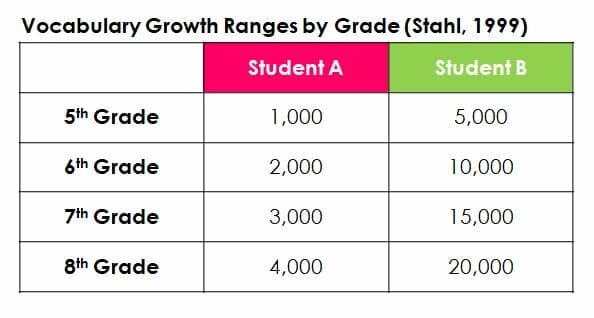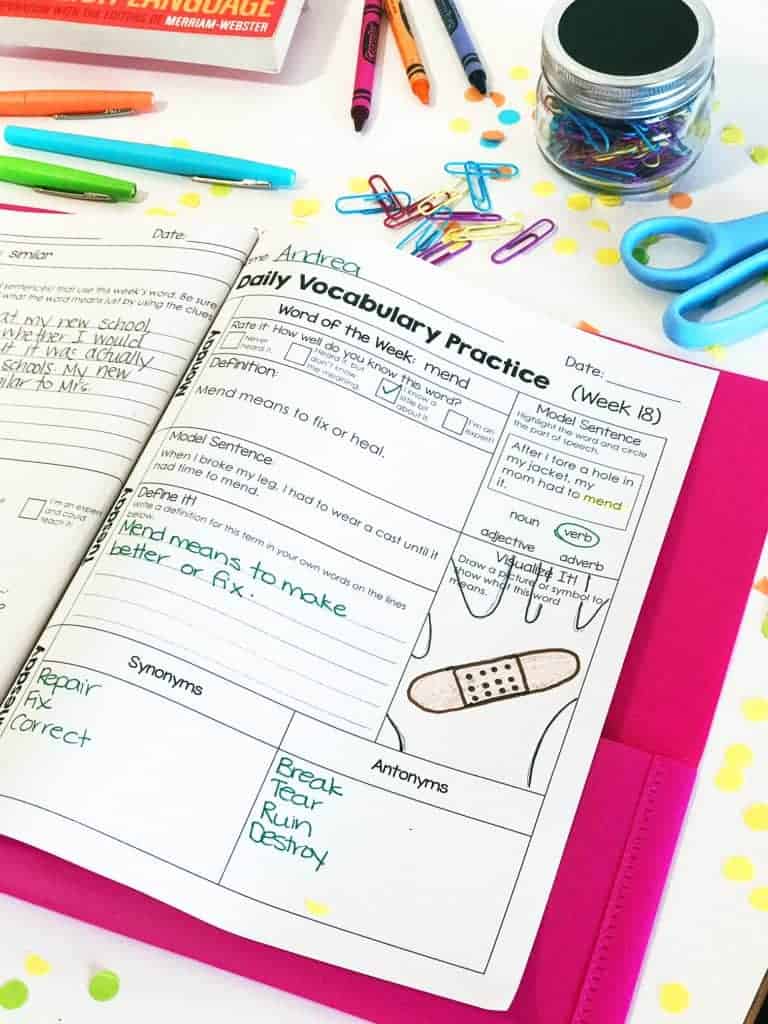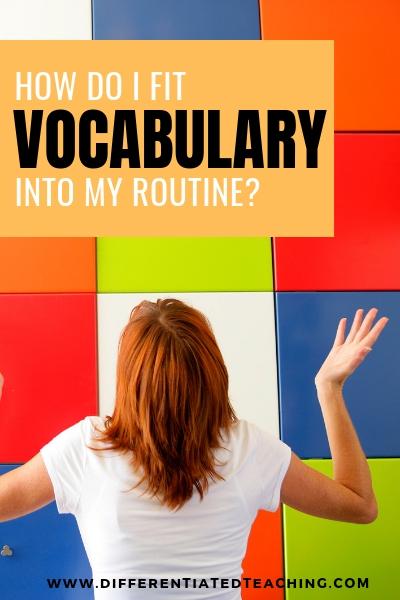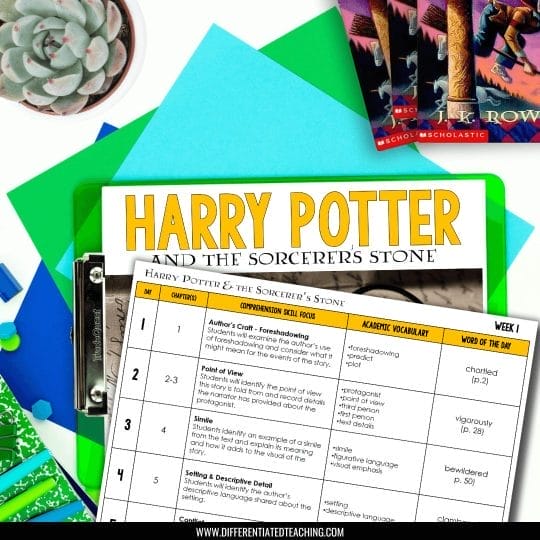Unlock Better Test Scores: Why Teaching Academic Vocabulary Matters in Your Classroom
Remember the classes you took in high school that surprisingly turned out to be life-changing? For me, it was ‘Vocabulary Development’ – an English elective I initially thought would be an easy credit to balance my heavy AP course load. The class, taught by a soon-to-retire teacher known for his high expectations and no-nonsense approach, challenged us with mastering over 20 new SAT prep words weekly. Far from the easy class I had imagined, it ended up being one of the most impactful experiences of my high school years.

Why am I sharing this? Because this class uniquely demonstrated the power of academic vocabulary, not just in school but in life. It’s a lesson I carry into my teaching today, especially when I encounter students struggling with vocabulary gaps that can critically impact their learning and test scores. So, let’s explore why and how we should integrate more robust vocabulary instruction into our packed teaching schedules.
The Power of Academic Vocabulary
While I had the luxury of taking Vocabulary Development in high school, many students struggle with academic vocabulary in elementary school. As an instructional coach for interventionists supporting struggling learners, I saw numerous students failing because they didn’t know the terms being used.
In fact, I even worked with several groups of students who had failed their state testing. By only focusing on academic vocabulary during our time together, they were able to pass the second administration.
For this reason, I make a focused effort to teach vocabulary in my classroom through authentic interactions and direct instruction and I encourage my team to do so as well.

Today I want to share the research behind my experiences and explain why vocabulary is probably one of the biggest factors impacting your standardized test scores.
The Research Speaks: How Vocabulary Shapes Academic Success

1. Research has shown that 5th graders pick up between 1,000 and 5,000 new words in a year (Stahl, 1999).
Pretty amazing, right? That is a TON of vocabulary.
However, think about it from a slightly different angle, and it becomes terrifying. The students gaining 5,000 words during the course of that year have a 5x larger gain than the student only gaining 1,000.
If that continues across several school years, by the time two children at the far extremes leave middle school there can be an enormous difference between them.

Which of these students is most likely to be able to read grade-level texts better? Write higher quality compositions? Have strong, content-related conversations?
And the differences you see in the table don’t account for any differences in vocabulary that the students come in with at the beginning of the year.
2. Vocabulary has a big impact on reading comprehension.
Not that shocking, right? Knowing more words helps you understand what you read better.
Whenever I am reading with students, I often have them stop to explain what they’ve read. More often than not it is just a word or two that has thrown off the meaning of the whole paragraph.
You might be surprised to know that when researchers looked at struggling readers in 2nd grade and up, their language comprehension skills (aka their vocabulary) was so low that it actually prevented them from getting anything out of most grade-level independent reading.
When we can build a child’s vocabulary, we are really teaching comprehension in an indirect way.
3. Struggling readers won’t pick up vocabulary just by reading books.
I was totally guilty of pushing context clues my first few years of teaching, and I was bewildered when my students weren’t picking up all the rich vocabulary I was exposing them to. I mean, how could that be?
Over the years I naturally started tailoring my vocabulary instruction to be more direct with repeated opportunities to interact and use the vocabulary. As a result, my students began using the words we were learning.
The research supports my trial-and-error discovery. While most teachers do not explicitly teach vocabulary (the research says as little as 1.5 minutes of a reading lesson focused on vocabulary), it is truly the way to help the students add that word to their word bank.
4. Word learning happens best when done through multiple means.
Students need opportunities to build words into their schema and to do that they need numerous exposures. They cannot just read the word in context and be done.
Research supports introducing and exposing students to vocabulary through multiple modalities, as well as hooking it to their prior knowledge, is huge in helping kids make gains. This can include reading, writing, non-verbal representation (drawing or acting), classifying words by part of speech, exploring semantic connections (synonyms, antonyms, word webs), and discussion (Marzano, 2004).

5. Dictionaries don’t cut it.
Students need clear, child-friendly definitions (Massachusetts Reading Association, 2011). They need opportunities to write their own definition after several exposures and to experience the word in context if we want our vocabulary instruction to stick.
While I may have learned quite a few words from my vocabulary development class, we studied 20-30 words per week for 9 weeks of instruction. We spent a lot of time looking up words in the dictionary, and well, we did a lot of activities that go against our current knowledge of how to make vocabulary stick.
As a result, I still come across words regularly that I know we “learned” in my class. However, I lack the definitions for many of them because they were never connected to my experiences or other words I knew well.
Vocabulary instruction needs to be accessible to kids or it is just a waste of time!
How to teach academic vocabulary
I totally get that. The number of standards we teach is a pressing weight on any teacher’s shoulders. I found that morning work (or right after lunch) was a perfect time to build in 5-10 minutes of vocabulary work.
Strategies That Work: Building a Robust Vocabulary Curriculum
Selecting the Right Words: A Strategic Approach
Using several resources, I identified words that would give me a good bang for my buck in terms of covering a variety of settings (socially and academically) and would help my students build the word bank they needed for success on state testing.
Scaffolded Learning: From Exposure to Mastery
Then, I designed a set of activities that incorporated the best practice standards. It was important that the set was useful and efficient since I was always pressed for time.
After testing it out, I made a few additional adjustments to help boost students’ mastery of these words. I also added quarterly quizzes to monitor how students retained their newly acquired vocabulary.
Transforming Outcomes: Success Stories from the Classroom
I highly recommend you consider your students’ vocabulary needs and start a set of activities in your classroom. It was fun to hear my students begin to notice these words in daily conversation and incorporate them into their speech.
I also found that my students better understood the questions and passages we were reading. It was worth it for a sacrifice of 5-10 minutes per day.
Practical Implementation: Fitting Vocabulary into a Busy Schedule
The research is clear, and we know vocabulary is a huge predictor of success…in life, school, and even on those dreaded standardized tests.
When we identify high-power words and ensure our students know them, we help give them the edge they need for success in our classroom and for years to come.
Find time to provide a few minutes of instruction on those critical academic vocabulary words daily.
Build them into your bell ringer or dismissal routine, find a few minutes as you prepare for lunch, or (even better) during your language arts block. Your students will be better for it.

Discover More: Introducing Daily Academic Vocabulary
To help teach crucial Tier 2 vocabulary words that are commonly on standardized assessments and within academic tasks, I created a daily warm-up that could fit into the small gaps in the school day.
Designed to take 10 minutes or less, Daily Academic Vocabulary is an easy way to give students repeated practice with the words they need to know to succeed.
Unlike other programs that focus on long lists of words and only develop a surface-level understanding, Daily Academic Vocabulary was designed to help students deeply understand these critical terms by teaching a single word each week and scaffolding the instruction to achieve mastery.
Learn more about Daily Academic Vocabulary or enter your info below to try it free.






